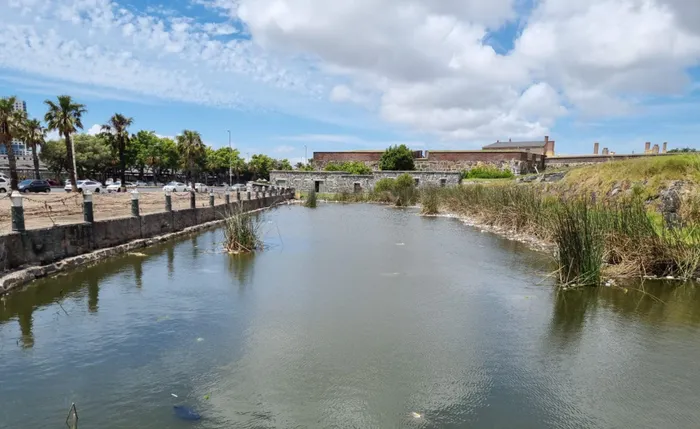Castle clean-up after squatter siege broken

A clean moat at the Castle of Good Hope after squatters were evicted last Friday.
It took almost three days to clear the tons of debris from the Castle of Good Hope’s moat left behind by the squatters who occupied the area.
They were evicted from the historic landmark by the Sheriff of the Court, with the help of SAPS and the Metro Police, on Friday November 1, after refusing to comply with a Western Cape High Court order giving them until Thursday October 17 to leave.
City trucks and tractors moved in to clear dozens of crude dwellings under the watch of law enforcement.
Clean-up crews dodged a swarm of rats as they cleared rubbish from the moat. And dead rats flew through the air as cleaners tossed them onto rubbish piles on the trucks.
Posting on social media, ward councillor Ian MacMahon described the clean-up’s progress, saying City staff had been “hard at work scooping tons and tons of rubbish, litter, rubbish, sludge and excrement” from the moat.

He said they had started on Friday November 1 after lunch, and the time stamp in a picture he posted showed a clean moat on Sunday November 3.
The land now stands empty, with a City Law Enforcement mobile office on the field to prevent invasions.

Castle Control Board chairperson Calvyn Gillfelon said the next step was to rehabilitate the land and the water in the moat and put up a fence around the property.
“There is such a lot to offer now. It’s a place where working class, tourists and business class come together, and we can enjoy the space of the oldest colonial building in the country.”
The Castle Control Board had always planned to evict the squatters who had settled there in the aftermath of the Covid pandemic in 2020, he said.

Mayor Geordin Hill-Lewis hailed the eviction of the squatters, saying: “It is positive for the whole city, positive for this heritage site, and positive for those who were living in indignity at this site for several years.
“This has been a very visible site of urban decay in recent years, and its clean-up is an important moment for urban restoration in the city.“
Mr Gillfelon said the camp had visually blighted the area and fuelled petty crime, drug and alcohol abuse, theft, prostitution and other ills common in the inner city.
The squatter camp had also served as a refuge for criminals and gang activity, he said.

One of the evicted squatters, Michael Smith, said he had only learned about the eviction from a friend on the day it had happened.
“Look at this now,” he said, pointing at a pile of debris in front of him. “You see what is happening here? Now we have nothing.”
Mr Smith said his drug habit had landed him on the streets five years ago, and he had moved to the castle about a year ago.
“I have never been in a shelter before. I would like to be in a shelter. It can help me become a better person and then go home to the family in Valhalla Park.”
He said drug activity in the camp had been rife, especially in the middle of the night, and with more than 100 “hokkies” on the site, it could be hard for the police to track down a thief or drug dealer.
Asked where he would go, he said he would probably find another settlement, perhaps in Dock Road.
Mr Gillfellon said about a quarter of the evicted squatters were at the City’s Safe Space homeless shelter while others had been seen roaming the city.
“Law enforcement agencies must look at how they can contain the crime in the eastern precinct and around the castle. I hope if we eliminate that, we will see the growth in tourism and economic opportunities.”
Cape Town Central police did not respond to our questions about the crime in the east city precinct by time of of publication.